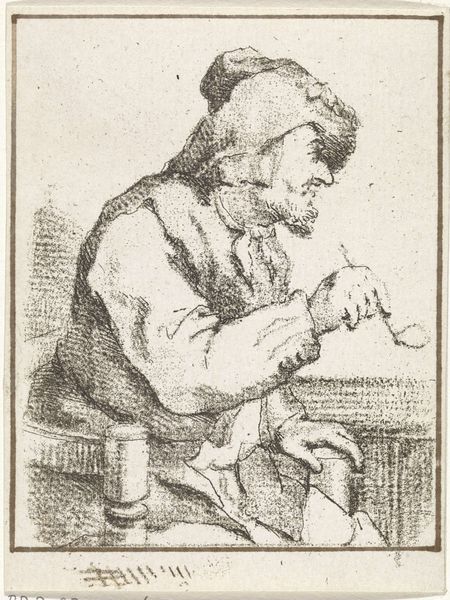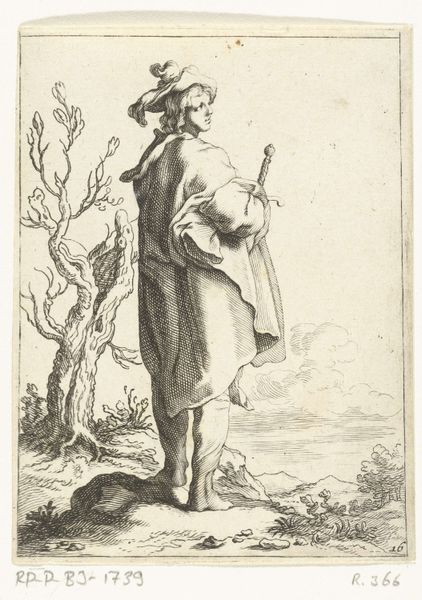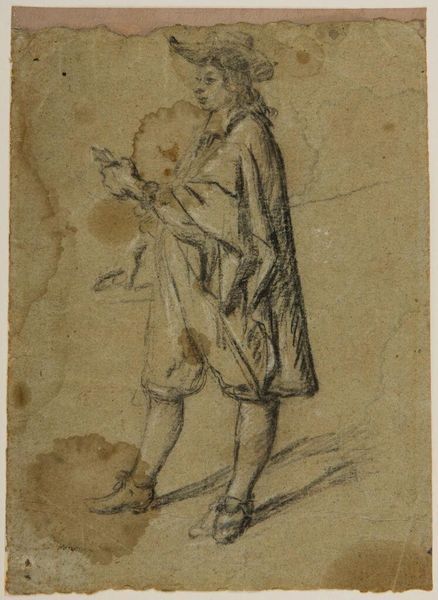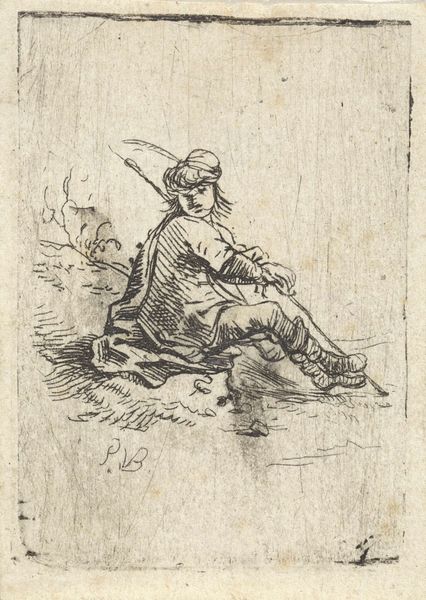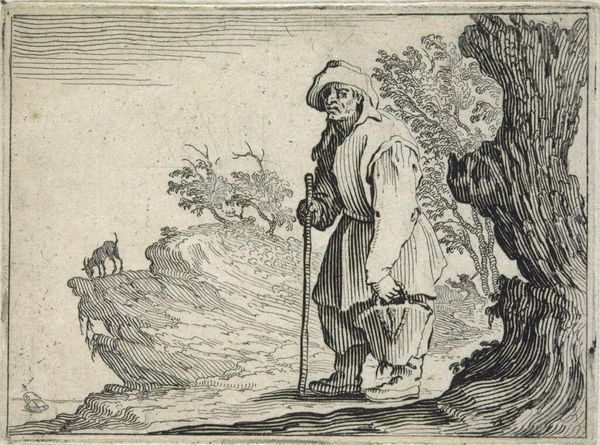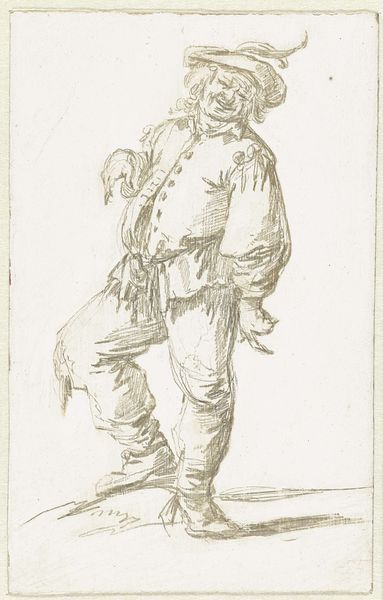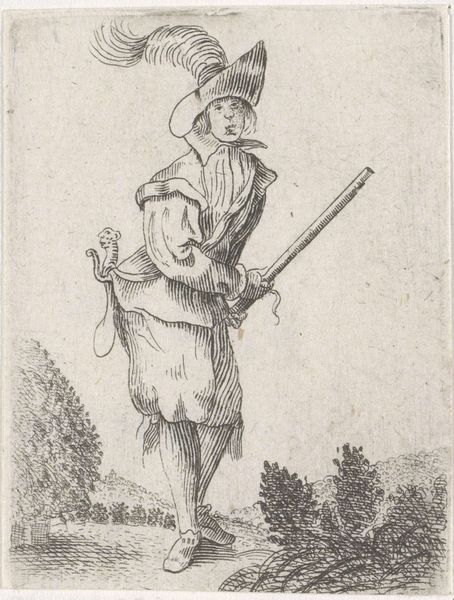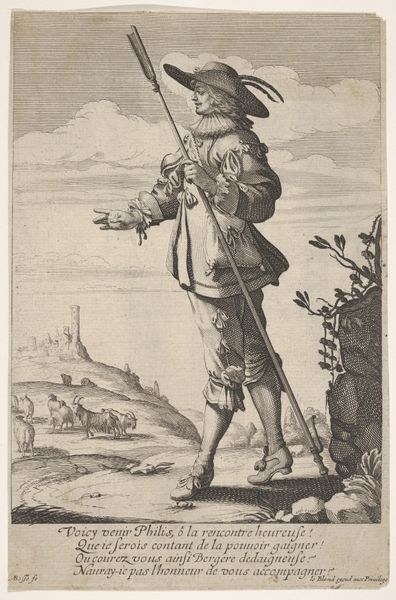
drawing, print, etching
#
portrait
#
drawing
#
imaginative character sketch
#
light pencil work
#
quirky sketch
#
baroque
#
dutch-golden-age
# print
#
etching
#
sketch book
#
personal sketchbook
#
idea generation sketch
#
sketchwork
#
sketchbook drawing
#
genre-painting
#
storyboard and sketchbook work
#
sketchbook art
Dimensions: height 122 mm, width 85 mm
Copyright: Rijks Museum: Open Domain
Salomon Savery created this print called ‘The Face’ in the Netherlands sometime before his death in 1678. The image depicts a seated man with an owl perched in a tree nearby. In the 17th century, Dutch artists often used images of everyday life to comment on social issues. It’s likely that Savery is critiquing the foolishness of this man. We can see that he is wearing glasses and has his hands clasped together as though he is plotting something, which contrasts with the symbolic association of owls and wisdom. Is Savery suggesting that appearances can be deceptive? This image also plays with ideas about the place of the individual in society. At the time, the Dutch Republic was a relatively new country that was grappling with questions about identity and belonging. To understand Savery's work fully, art historians might look at Dutch emblem books from the time, which use symbolic images to convey moral messages. Examining historical documents helps us to understand the ever-changing meanings of art.
Comments
No comments
Be the first to comment and join the conversation on the ultimate creative platform.

